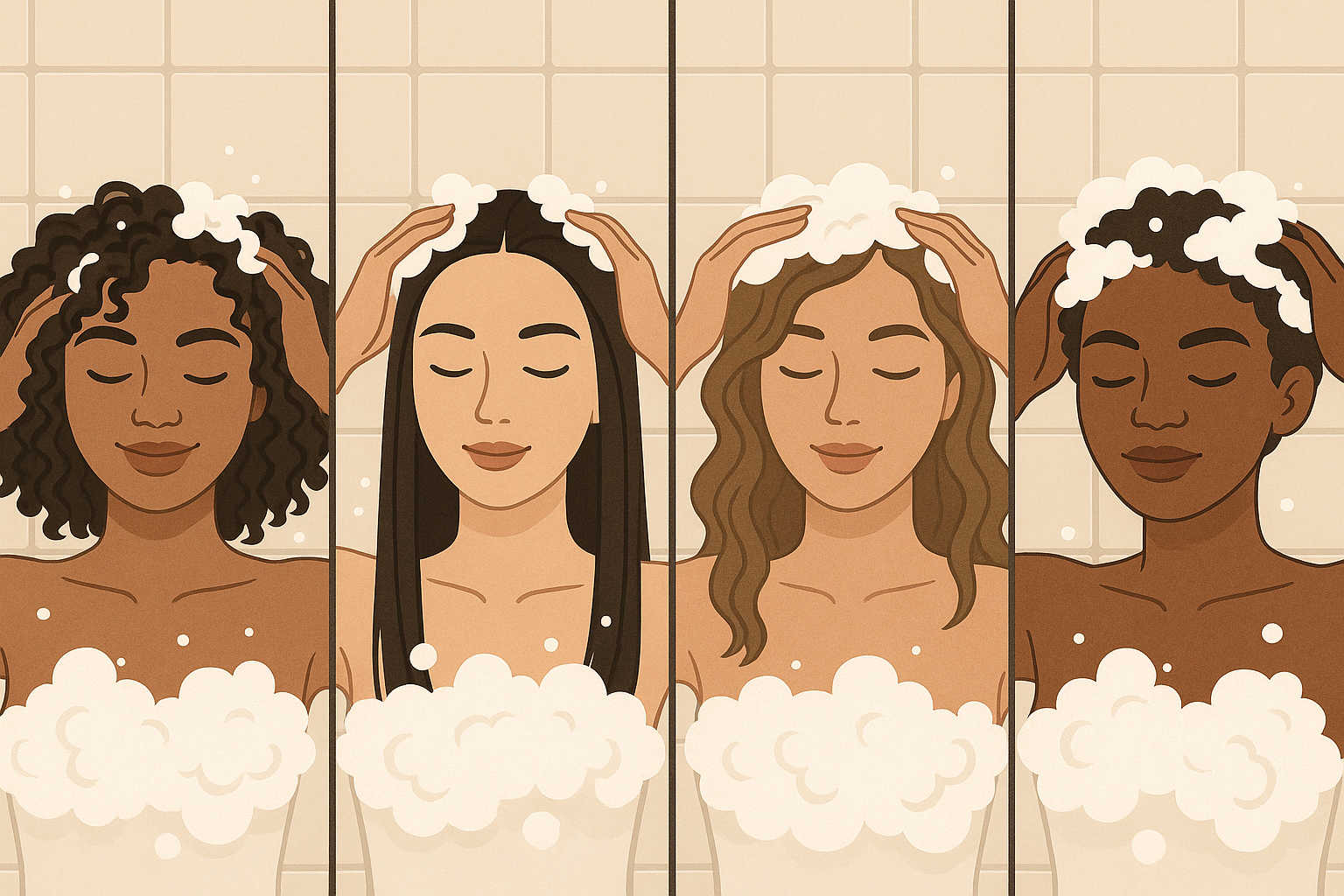
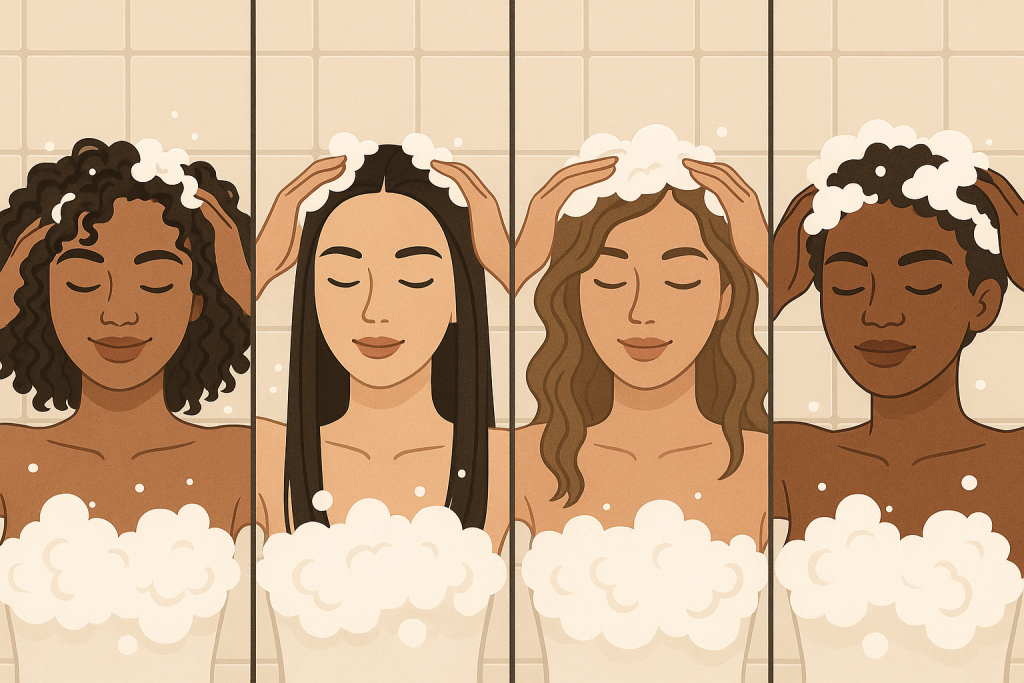
How to know your hair type is the million-dollar question that 76% of people get wrong, according to a recent industry study. Hey hair lovers! I’ve spent years watching people struggle with frizz, flatness and frustration because they’re using products all wrong for their actual texture. It turns out, hair is more than just something you style each morning—it’s the crown you never take off, and there’s power in understanding its true nature. What truth? Most of us wander the hair care aisle clueless about what our strands actually need. Whether your tresses are pin-straight or form tight coils, identifying hair type is the key to unlocking a hair care regimen that truly works. I’ll show you exactly how to identify the type of hair you have, what products actually work for you and how to finally get the hair you’ve been chasing all along.
Understanding the Hair Typing System: What’s Behind Those Numbers and Letters?
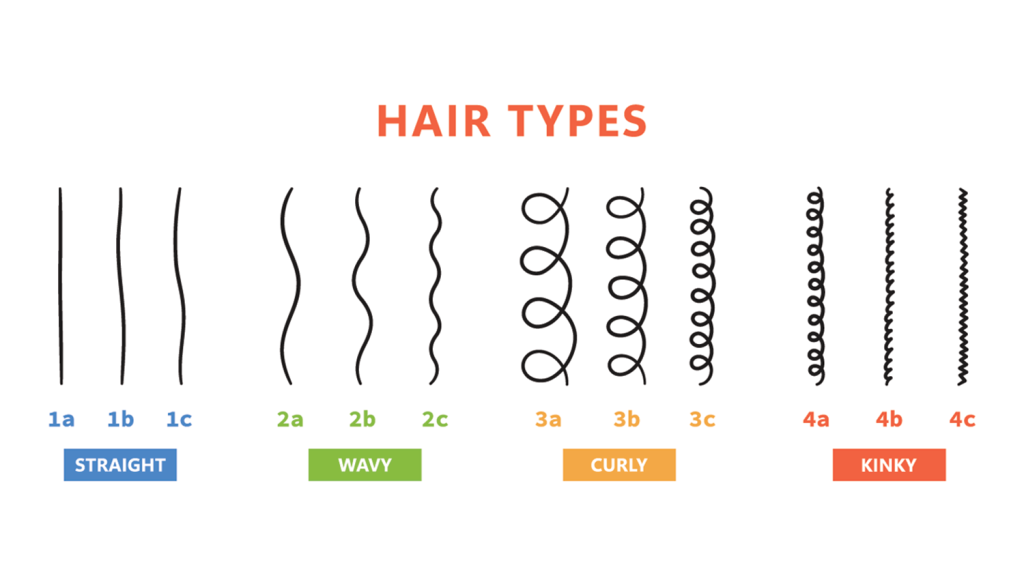
The Andre Walker Hair Typing System
Behind closed doors, hair professionals have been using the Andre Walker Hair Typing System since the late 1990s. But most consumers are still in the dark about what those numbers and letters actually mean. Oprah’s longtime hairstylist, André Walker, developed a method of categorizing hair texture to assist individuals in selecting suitable products. The hair typing system classifies hair into four types (1–4) and assigns letters (A–C) to indicate texture coarseness.
- Type 1 refers to straight hair, which has no natural curl.
- Type 2 refers to wavy hair.
- Type 3 includes all types of curly hair, from loose curls to tight corkscrews.
- Type 4 is coily or kinky and has the tightest curls.
What no one wants to admit is that it has some serious limitations. The Valley doesn’t want you to know this, but the whole thing was initially created for product marketing purposes rather than rigorous scientific classification. Additionally, hair porosity, density and elasticity are equally important aspects of your hair identity. And while curl pattern dominates the conversation, the growing popularity of eco friendly hair products for a sustainable future underscores that understanding your unique combination of hair traits is key—not just type alone.
- Type 2 wavy hair spans from 2A (barely-there waves) to 2C (more defined S-waves with frizz).
- Type 3 curly hair ranges from 3A (loose spirals) to 3C (tight corkscrew curls).
- Type 4 coily hair includes types like 4A (dense S-coils) and even tighter patterns up to 4C.
While hair typing is not an exact science, it’s a helpful way to start understanding your hair’s unique needs.
Identifying Your Specific Hair Type: How to Know Your Hair Type in Practice
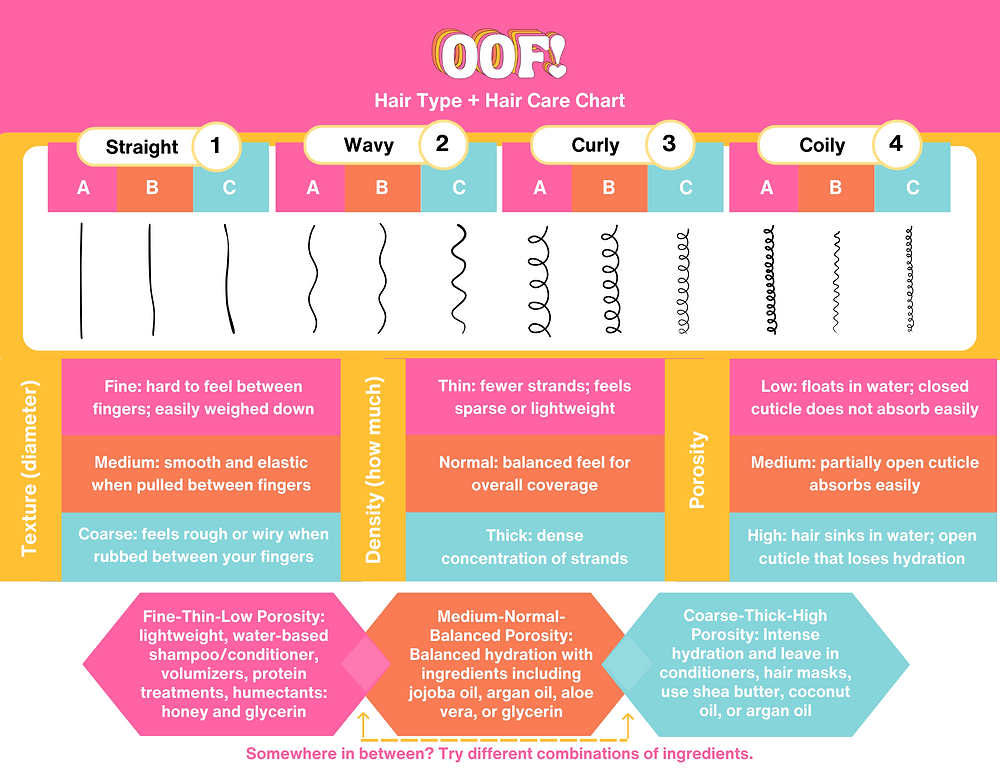
This means looking at your strands when they don’t have any product on them and are air dried with no styling. The first step is to identify your main category.
- Type 1 is straight and if it falls down without any discernible bend or wave, that is you.
- Type 2 forms an “S” shape and tends to have a gentle curve.
- Type 3 forms spirals or ringlets about the size of sidewalk chalk.
- Type 4 forms tight coils or zigzag patterns.
The behind-the-scenes criteria hair professionals use look beyond curl pattern alone and require careful evaluation of characteristics such as porosity, which also brings sustainable considerations into focus. For those deeply invested in minimizing their environmental footprint, investigating eco friendly hair care practices for daily routines helps bridge the gap between learning your hair type and caring for it responsibly.
- Strand Thickness: Is the hair fine, medium, or coarse?
- Hair density (how many strands per square inch)
- Elasticity (how much your hair stretches and returns)
- Porosity: How well your hair retains moisture and oils.
I asked several stylists what the biggest hair mistake is that people make. They unanimously agreed that I was confusing hair that had been heat or chemically damaged with my true texture.
List of Hair Types and Subtypes
- Type 1 (Straight Hair)
- 1A: Fine, thin and soft with a noticeable shine. Difficult to hold curls.
- 1B: Medium texture and some volume with slightly more curl resistance.
- 1C: Coarse with body; hard to curl and generally resistant to styling.
- Type 2 (Wavy Hair)
- 2A: Fine hair with a loose, tousled texture.
- 2B: Medium texture with more defined waves from the crown. Prone to frizz.
- 2C: Coarse hair with distinct S-shaped waves starting at the roots.
- Type 3 (Curly Hair)
- 3A: Loose curls about the size of sidewalk chalk; prone to frizzing.
- 3B: Tighter springy curls similar in circumference to a sharpie marker; needs moisture balance.
- 3C: Tight corkscrew curls close in diameter to a pencil or straw; dense texture and volume.
The Valley already gets away with not being accountable enough, when it comes to helping consumers understand what their hair needs. If you look closely, the demand for the best vegan hair care products that match intricate hair types reflects a shift toward ingredient consciousness and customized routines.
Porosity Tests & Texture Analysis
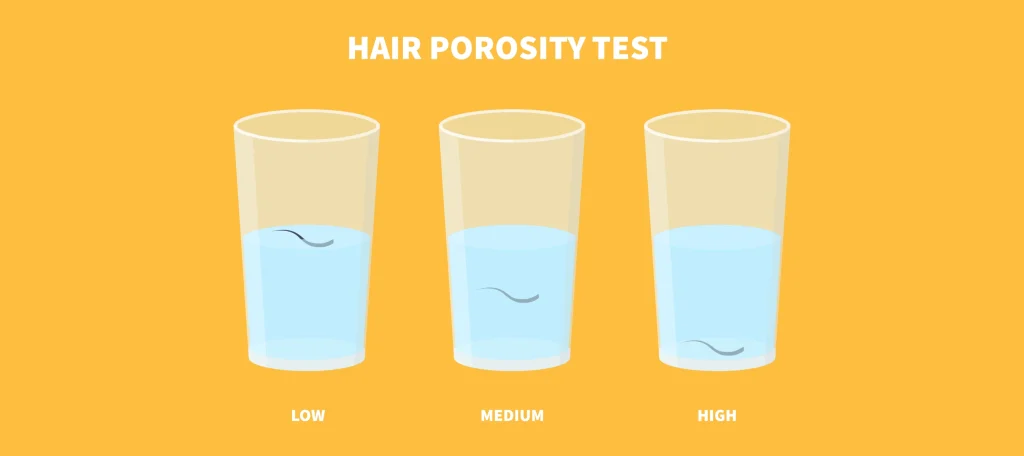
Porosity, namely how well your hair absorbs and retains moisture, knows no curl pattern boundaries. While most guides focus on pattern, it’s porosity that decides which leave-ins work and how long moisture lasts after washing. Progress toward sustainability in hair care hinges on understanding porosity but is also accelerated by integrating eco friendly hair care practices at every step.
Here are three ways you can test your hair porosity at home:
- Take a clean strand of hair.
- Drop it in a glass of water.
What Happens:
- Floats for a long time = Low porosity
- Sinks slowly = Normal porosity
- Sinks immediately = High porosity
The Spray Bottle Test:
- Section clean, dry hair
- Mist with water
- Watch what happens:
- Water beads up and sits on the hair: Low porosity
- Water slowly absorbs into the hair: Normal porosity
- Water quickly absorbs into the hair: High porosity
The Slip ‘n Slide Test:
- Hold a strand of hair between your fingers.
- Slide your fingers up toward the scalp.
Industry insiders attest that hair porosity is more important than curl pattern when deciding which products to use. Behind closed doors, hair pros match products to porosity first and curl pattern second. As this approach becomes more mainstream, so does the search for best vegan hair care products for every porosity level, blending ethical choices with science-backed routines.
- Low porosity hair requires lightweight, water-based products that can penetrate the hair shaft.
- High porosity hair craves rich, sealing products to lock moisture in.
- Normal porosity refers to the ability of hair to absorb and retain moisture at an average or typical rate. You won the lottery with this one!
Porosity can change over time due to chemical processing and heat damage. Time to be honest: what worked for you once is no longer cutting it. For those seeking sustainable solutions as their hair changes, exploring eco friendly hair care practices that adapt over time is essential.
Seasonal Care Variations & Solutions
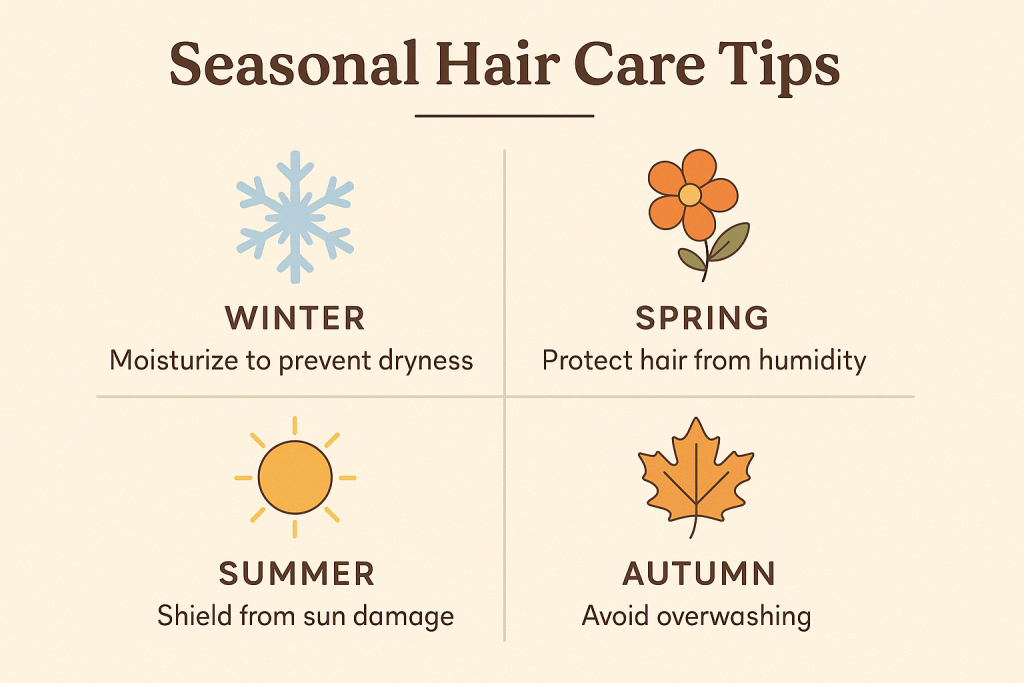
What works in January will not work in July. Behind closed doors, hair professionals completely change their recommendations based on where you live. Still, emerging product lines are also responding—consumers are increasingly asking about the best vegan hair care products for different seasons and routines, recognizing that a one-size-fits-all approach no longer makes sense.
Summer Challenges By Hair Type:
- Type 1 (Straight): Increased oil production, limpness and sun damage
- Type 2 (Wavy): Frizz explosion, waves falling flat in humidity
- Type 3 (Curly): Excessive frizz, undefined curls and dryness despite humidity
- Type 4 (Coily/Kinky): Severe moisture loss, shrinkage and breakage
Winter Challenges By Hair Type:
- Type 1 (Straight): Static electricity, brittle ends and flatness
- Type 2 (Wavy): Inconsistent wave pattern, dryness and lack of definition
- Type 3 (Curly): Dryness, breakage and dramatically reduced curl definition
- Type 4 (Coily/Kinky): Extreme dryness, brittleness due to lack of moisture
The untold story is that humidity levels affect each hair type differently. Type 1 hair tends to fall flat and lose volume, while type 3 or type 4 hair shrinks up dramatically. Type 2 hair might become enhanced in light humidity but frizzy in high humidity. For those continually adjusting their routine, considering how eco friendly hair products can evolve with your seasonal needs reveals a layer of complexity few guides address directly.
- Do you adjust your product usage according to the seasons (heavier in winter, lighter in summer)?
- Do you wash less frequently during winter months?
- Do you style your hair differently based on the dew point?
This is serious and ignoring it can undo all the hard work you’ve put into understanding your hair type. And the hair academy education is yet to catch up. Those grappling with the complex dynamics of texture, climate, and ethics may discover that eco friendly hair care practices tailored to specific environments can yield more reliable, long-term results.
Comparison Table: Major Hair Types
| Hair Type | Texture/Pattern | Common Issues | Suggested Routine/Product Types |
|---|---|---|---|
| Type 1 (Straight) | Flat, no natural curl | Oiliness, lack of volume | Volumizing shampoos, lightweight conditioners, daily washing needed for oil control |
| Type 2A-2B (Loose Waves) | Loose S-shaped waves | Frizz at ends, inconsistent wave pattern | Wave-enhancing mousses, light oils for frizz control, wash every 2-3 days |
| Type 2C (Defined Waves) | More defined waves from root to tip | Frizz throughout hair, waves can fall flat easily | Anti-humidity creams and curl creams for definition and frizz control, wash every 2-3 days |
For example: “3B curls with medium porosity and high density” or “1A straight with low porosity and low density.” This comprehensive profile will help you choose the right products and techniques to care for your hair, much more than knowing your curl pattern will. The evolution of hair care research—even for those with highly textured patterns—now prompts many to seek advice on establishing a curly hair routine tailored to your unique hair profile, highlighting just how nuanced product choice and care have become.
Interactive Quiz/Flowchart: Find Your Hair Type
Ready to find your hair type? Follow this quick interactive flow:
- Wash and air dry your hair with no product.
- Observe the pattern:
- Straight—no visible wave (Type 1)?
- Loose to defined S-waves (Type 2)?
- Spirals, ringlets, corkscrews (Type 3)?
- Zigzag, tight coils (Type 4)?
- Take the porosity float test (described above).
- Identify strand thickness (fine, medium, coarse).
Once you have those answers, review the chart above. Tally your “profile” and pair it with routine suggestions! If you’re searching for easy solutions when time is tight, uncovering 35 quick curly hair products that fit nearly any routine can make the entire process more approachable.
Cheat Sheet Tip: Screenshot or print this chart to keep by your vanity—the more you check in with your true hair type, the more effective your hair care routine will be.
Real-World Examples & Case Studies
Case Study 1: Sarah’s Wavy Hair Revelation
Sarah spent years straightening her hair daily, thinking she had frizzy, unmanageable straight hair (Type 1). Once I properly identified as Type 2B, I switched to sulfate-free shampoo, lightweight curl cream and diffusing. “I never knew I had actual waves! I was fighting my natural texture for years, using the wrong products and causing heat damage.” In Sarah’s journey, embracing the beautiful chaos of Hispanic curly hair experiences provided an unexpected roadmap for rediscovering her authentic hair pattern.
Case Study 2: Miguel’s Curl Transformation
Miguel thought he had Type 3A curls based on how his hair looked when wet. His routine heavily relied on butters and oils, which left his hair looking weighed down and greasy. After thorough research and analysis, I discovered that my hair is actually type 2C with high porosity. Switching from heavier to lighter products and introducing protein treatments completely changed his hair from limp to full, voluminous and defined waves.
Case Study 3: Aisha’s Coily Hair Journey
Aisha struggled with extreme dryness and breakage despite using moisturizing products marketed for “curly hair.” “After determining that I am Type 4B with low porosity, I completely revamped my routine: pre-poos with warm oil treatments to lift the cuticle, protein-free conditioners and applying product on soaking wet hair. “Understanding my actual hair type and porosity changed everything. For Aisha, small changes throughout the week—such as incorporating sustainable product choices—reflected how eco friendly hair products can affect moisture balance and overall texture health.
The hair-care founder myth is that “all” products work broadly enough. Real-life examples show that there is a huge difference between the way marketers position products and what they truly are. The move toward eco friendly hair care practices in daily life reveals this difference in very real ways.
Common Myths & FAQs on Hair Types and Care
Myth 1: “You can change your hair type permanently.”
Reality: Your genetic hair type cannot be changed without a chemical process. Temporary styling will have no effect on your hair structure once you wash the product out. Chemical treatments, such as relaxers or perms, can alter the texture but may cause damage.
Myth 2: “Curly hair types need to wash less frequently than straight hair.”
Reality: Washing frequency is more about your scalp, lifestyle and porosity than curl type. Some type 4 hair needs frequent washing to maintain scalp health, while some type 1 hair can go days or even a week without washing. Listen to your scalp and hair, not just the type number. Developing a sustainable and effective routine is an ongoing experiment that often leads people to research eco friendly hair care practices for different washing schedules.
Myth 3: “Products Marketed for Your Hair Type Will Work.”
Reality: Hair type is only one consideration when selecting products. Porosity, density, strand thickness and individual sensitivities are equally important. Many people with identical curl patterns need completely different products based on these other factors. This complexity has fueled the rise in popularity of plant-based or vegan hair care products uniquely tailored to complex hair characteristics.
Myth 4: “Hair typing is scientifically precise.”
Reality: The Andre Walker system is just a guide, not a scientific classification. Many people have combination hair, which means they have different types on different parts of their head. Additionally, the system doesn’t differentiate between items from different cultures and ethnicities that share similar textures.
FAQ 1: Can My Hair Type Change Over Time?
Yes, hormonal changes (such as pregnancy or menopause), aging, medication side effects and certain health conditions can affect hair texture. Many people observe that their hair tends to be straighter or curlier at various life stages.
FAQ 2: Why Does My Hair Look Different When It’s Wet vs. Dry?
When hair becomes wet, the hydrogen bonds in keratin temporarily break and reform, which is why wet hair can be styled and then retain that style when it dries. When wet, many wavy and curly hair types look straight. Always find out your true type when the hair is fully dry and product free. For those navigating twists, curls and coils, understanding the nuances of a thorough curly hair routine from start to finish can help clarify the dramatic shift between wet and dry appearances.
FAQ 3: I Have Several Different Textures on My Head—What’s My Type?
This is extremely common! Focus on the main texture, but you might need to use a different technique or product amount in another section. Individuals with mixed textures often explore holistic eco friendly hair care practices for multi-textured hair to address these overlapping needs.
FAQ 4: Does Hair Type Affect Hair Growth?
Hair growth rate (approximately ½ inch per month) is genetic and has nothing to do with the hair type. For tightly coiled hair, the breakage is more common, which makes it harder to retain length.
FAQ 5: Should I “train” my hair to be a different type?
The idea that you can “train” your hair to be straighter or curlier is a myth. Consistent hair styling might temporarily influence the hair’s fall, but the natural texture will always reassert itself. Learn to enhance and maximize the type of hair you have rather than constantly fighting it.
Downloadable Daily Hair Care Routine Checklists
Type 1 (Straight) Hair Care Routine
Morning Routine:
- Use volumizing shampoo for gentle cleansing.
- Apply lightweight conditioner to ends only.
- Use heat protectant if hot tools are used.
- Apply volumizing product at roots.
- Optional: Use a small amount of shine serum on lengths.
Evening Routine:
- Brush hair gently from ends to roots.
- Sleep on a silk/satin pillowcase to prevent friction.
- Optional: Apply dry shampoo at roots if oily.
Weekly Treatments:
- Clarifying shampoo once a week.
- Lightweight mask for added hydration.
- Scalp exfoliation to control oil production.
Adjust the routines according to your porosity and density level. The lack of awareness and understanding about textured hair’s needs can be attributed to the accountability gap in education—and highlights why so many are seeking modern eco friendly hair care practices that support every type.

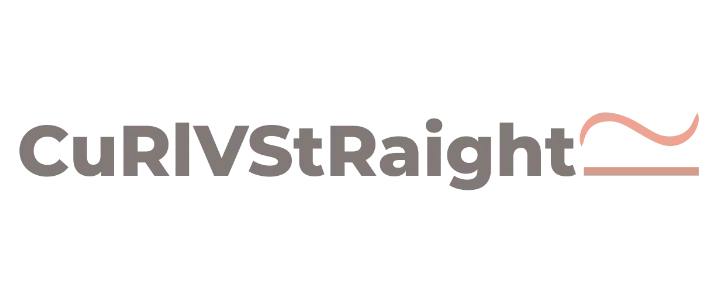
Leave a Reply